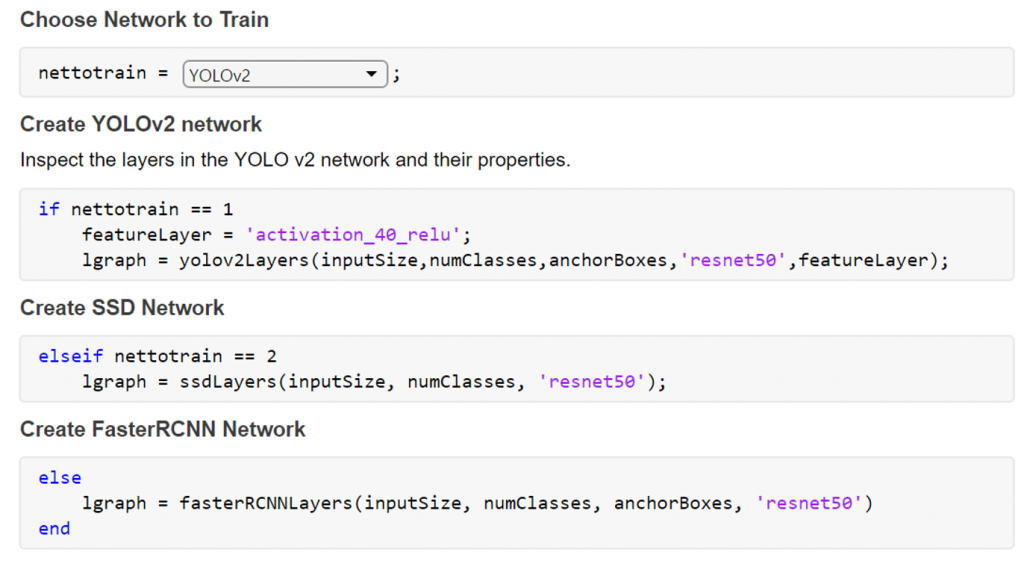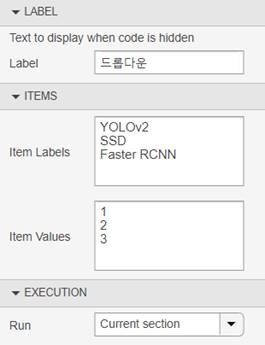Applications in Response to COVID-19: Mask Detection
- Chest X-Ray dataset from WHO/University of Montreal (Link)
- Articles & documents dataset from the White House (Link)
- Research Papers dataset (Link)
- COVID-19 tracking dataset (Link)
Mask Detection
Using Deep Learning, I want to detect the presence of a person wearing a mask. You can envision a scenario where this would be useful: perhaps ensuring masks are being worn before entering a location where masks are required. You can see the results of the code here:Automatic Image Labeling
It can be a time-consuming process to label all training images. Can we semi-automate the process of mask labeling? Here is the approach: we know we can detect faces with reasonable accuracy using pretrained face detectors (There are many detectors available on FileExchange, and in Computer Vision Toolbox). The theory is we can use the lower half of the face to detect where the mask should be. The figure below shows the workflow as a set of steps:
Showing automatic detection of masks used as input to the mask detector training. Start with image of person wearing mask (left), detect face (center), detect mask as lower half of face (right).
% create imageDatastore to gather all training images imds = imageDatastore("SampleMaskData\") % Please change "SampleMaskData" to your training data locationImport a pretrained face detector from Caffe
% import pretrained face detector
faceYoloNet = importCaffeNetwork('models\net_face_yolo_deploy.prototxt',...
'models\net_face_yolog.caffemodel','OutputLayerType','regression');
save net_face_yolog.mat faceYoloNet
Next, read a sample image, detect the face, and use bottom half of bounding box as approximate mask location.
img = read(imds); ori_sz = size(img,[1 2]); re_sz = [448 448]; imgr = imresize(img,re_sz); scale = ori_sz ./ re_sz; % Detect Face bbox = predictFace(imgr,'net_face_yolo.mat'); % Find lower half of bounding box bbox(:,4) = bbox(:,4) ./2 + 20; bbox(:,2) = bbox(:,2) + bbox(:,4) - 20; bbox(:,3) = bbox(:,3) + 20; bbox = bboxresize(round(bbox),scale); % Display Final Image img = insertShape(img,'Rectangle',bbox,'LineWidth',15); figure; imshow(img); title('DetectedMask');

Screen shot showing result of code. This does a reasonable job of detecting mask location.
Comparing Training Algorithms
Using MATLAB Live Editor Controls, you can quickly switch between networks and customize the deep learning training or testing with minimal code changes.
With Live Editor Controls, you can assign each item a value, and then write code (above) for when that option is selected. For this example, each network is assigned a simple value of 1,2,3 as shown below.
 There are many object detection algorithms in research; I’ve chosen to implement 1-stage detectors like YOLO v2 and SSD for real-time inference of trained models. For these detectors, we do not need to implement a region proposal extraction process before feeding images into networks like the RCNN series. For this demo, I prioritized inference speed over accuracy; these considerations led me to YOLO v2 and SSD detectors for this application. Both detectors work quite well to detect masks as shown below.
There are many object detection algorithms in research; I’ve chosen to implement 1-stage detectors like YOLO v2 and SSD for real-time inference of trained models. For these detectors, we do not need to implement a region proposal extraction process before feeding images into networks like the RCNN series. For this demo, I prioritized inference speed over accuracy; these considerations led me to YOLO v2 and SSD detectors for this application. Both detectors work quite well to detect masks as shown below.
Comparing SSD and YOLO v2 detectors.
Generating Code to Accelerate Inference
You can see in the following video the different frame rates captured in the top left corner. What accounts for the difference in speed? The video on the left is running the code on a GPU in MATLAB, and the video on the right is running the code converted to optimized CUDA in MATLAB. While generating code is optional for this demo, I’ve observed that generating a CUDA MEX performs:- Approximately 8x faster than a CPU running the code in MATLAB
- Approximately 2x faster than a GPU running the code in MATLAB (Note I'm using an external GPU with thunderbolt connection for this demo)
- Category:
- Deep Learning
 Cleve’s Corner: Cleve Moler on Mathematics and Computing
Cleve’s Corner: Cleve Moler on Mathematics and Computing The MATLAB Blog
The MATLAB Blog Guy on Simulink
Guy on Simulink MATLAB Community
MATLAB Community Artificial Intelligence
Artificial Intelligence Developer Zone
Developer Zone Stuart’s MATLAB Videos
Stuart’s MATLAB Videos Behind the Headlines
Behind the Headlines File Exchange Pick of the Week
File Exchange Pick of the Week Hans on IoT
Hans on IoT Student Lounge
Student Lounge MATLAB ユーザーコミュニティー
MATLAB ユーザーコミュニティー Startups, Accelerators, & Entrepreneurs
Startups, Accelerators, & Entrepreneurs Autonomous Systems
Autonomous Systems Quantitative Finance
Quantitative Finance MATLAB Graphics and App Building
MATLAB Graphics and App Building








Comments
To leave a comment, please click here to sign in to your MathWorks Account or create a new one.